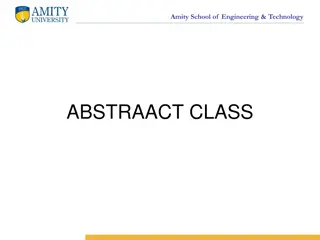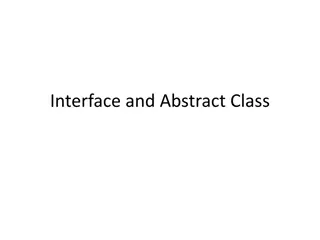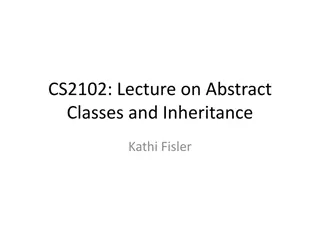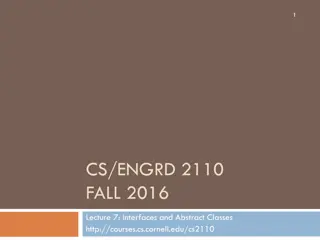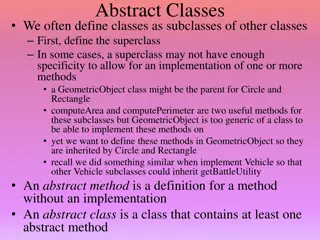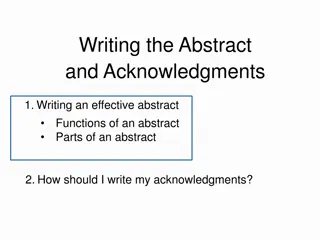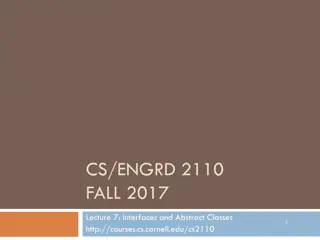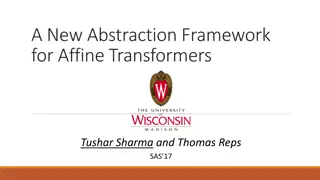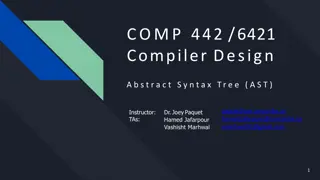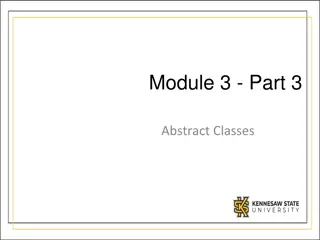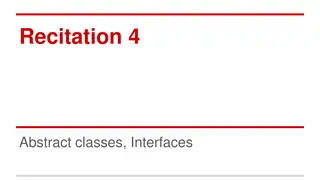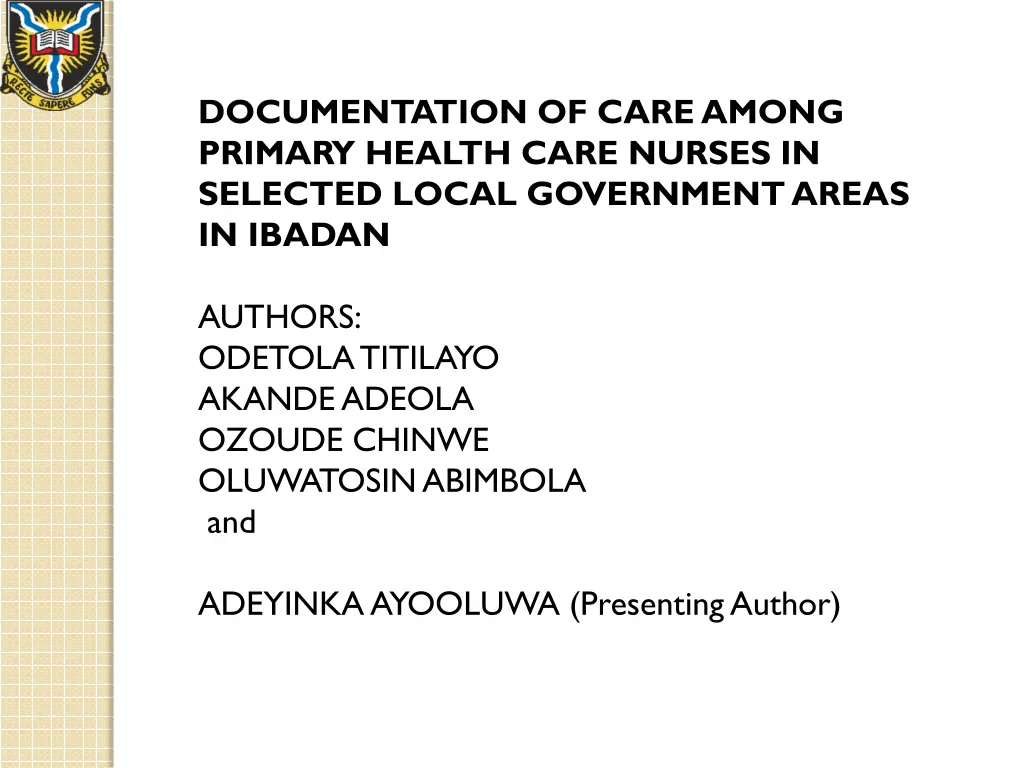
Documentation of Care Among Primary Health Care Nurses in Ibadan
Explore a research study on the documentation practices of primary health care nurses in selected local government areas in Ibadan. The study delves into the importance of proper documentation for quality client care, challenges faced by nurses, and the significance of effective communication in nursing.
Download Presentation

Please find below an Image/Link to download the presentation.
The content on the website is provided AS IS for your information and personal use only. It may not be sold, licensed, or shared on other websites without obtaining consent from the author. If you encounter any issues during the download, it is possible that the publisher has removed the file from their server.
You are allowed to download the files provided on this website for personal or commercial use, subject to the condition that they are used lawfully. All files are the property of their respective owners.
The content on the website is provided AS IS for your information and personal use only. It may not be sold, licensed, or shared on other websites without obtaining consent from the author.
E N D
Presentation Transcript
DOCUMENTATION OF CARE AMONG PRIMARY HEALTH CARE NURSES IN SELECTED LOCAL GOVERNMENT AREAS IN IBADAN AUTHORS: ODETOLA TITILAYO AKANDE ADEOLA OZOUDE CHINWE OLUWATOSIN ABIMBOLA and ADEYINKA AYOOLUWA (Presenting Author)
UNIVERSITY OF IBADAN, the first and the best (above is the university front gate)
DOCUMENTATION OF CARE AMONG PRIMARY HEALTH CARE NURSES IN SELECTED LOCAL GOVERNMENT AREAS IN IBADAN A PAPER PRESENTED AT THE OYO STATE NANDA-I WORKSHOP Held at: COLLEGE OF NURSING AND MIDWIFERY, ELEYELE, IBADAN
OUTLINE Introduction Objectives of the study Hypothesis literature review Conceptual framework Methods Results Discussion Conclusion
INTRODUCTION Nursing is characterized with continuity of care Nurses communicate observations, decisions, actions and outcomes for clients through documentation Documentation in nursing is an important strategy for ensuring clients have access to quality and safe care (Anderson, 2012). The College of Registered Nurses of British Columbia (2013) defined Documentation as any written or electronically generated information about a client that describes the care or service provided to that client Clients are given quality care through documentation facilitated by standardized means of communication between nurses
STATEMENT OF PROBLEM Primary healthcare nurses often give total nursing care within a twenty- four hours period It is therefore imperative that nurses who practice in such setting ensure they document appropriately the care given to their clients However it has been observed that some nurse clinicians do not make documentation of care a priority and do not effectively utilize appropriate terminologies and standardized nursing languages in their delivery of care (Lunney, 2012) It is on this premise that the researchers sought to scientifically assess knowledge, practice and perceived challenges in documentation of care among PHC nurses in Ibadan
SIGNIFICANCE OF THE STUDY This study helped shed more light on how well nurses understood the need for and practice of appropriate documentation. It helped identify barriers that militate against effective nursing documentation It also helped identify ways through which the knowledge and practice of documentation of care rendered by nurses working in PHC centres can be improved upon.
OBJECTIVES OF THE STUDY The broad objective was to determine the extent to which nursing care was documented by PHC nurses The specific objectives were: oTo determine the knowledge and level of practice of documentation of nursing care among PHC nurses. To identify the tools utilized for documentation. To know the barriers to documentation of care. To identify ways to improve nursing documentation To determine if PHC nurses utilize NANDA-I to document nursing care delivered.
RESEARCH HYPOTHESIS There is no significant relationship between the level of education of nurses and their documentation of nursing care. There is no significant relationship between the years of experience nurses have and their documentation of nursing care.
OPERATIONAL DEFINITIONS Documentation: Any written information that details the forms and types of nursing activities that has been carried out on a patient or client. Nursing care: This refers to procedures and services rendered by nurses which are aimed at providing comfort, alleviating pain, symptoms or distress that patients pass through. Nurses: These are those who have been trained as nurses, are registered with the Nursing and Midwifery Council of Nigeria and currently hold a practising license. Standardized Nursing Languages (SNLs): These are a means of communication between and among nurses on issues that are peculiar to nursing. NANDA-I: a standard pattern of communicating among nurses which emphasizes nurses diagnoses of patients problems.
OUTLINE OF LITERATURE REVIEW The objectives of the study guided our review of literature : o Knowledge and practice of documentation among nurses o Tools for documentation o Barriers to documentation o Standardized nursing languages o Utilization of NANDA-I for documentation
CONCEPTUAL FRAMEWORK Rogers Diffusion of Innovations which seeks to explain how innovations are taken up in a population. An innovation is an idea, behaviour, or object that is perceived as new by its audience. Diffusion scholars recognize five qualities that determine the success of an innovation. Relative advantage Compatibility with existing values and practices Simplicity and ease of use Trial ability Observable results
RESEARCH METHODOLOGY RESEARCH DESIGN- A cross sectional design was adopted in carrying out this study. RESEARCH SETTING-This study was carried out in six selected local government areas in Ibadan They are; Ibadan North, Ibadan South East, Ibadan South west, Akinyele, Lagelu and Oluyole local government areas. TARGET POPULATION- PHC nurses in Ibadan SAMPLING AND SAMPLE SELECTION- Simple random sampling technique was utilized to select the local government areas where the study was carried out. All the nurses working in the PHC centres participated
INSTRUMENT FOR DATA COLLECTION A structured questionnaire was developed after vast literature review. It comprised five sections that assessed respondents : o socio demographic characteristics o quality of nursing documentation o tools for documentation o barriers to the effective documentation of nursing care and o factors that can promote the effective documentation of nursing care Validity the questionnaire was reviewed by experts for face validity Reliability
ETHICAL CONSIDERATIONS Approval to carry out the study was obtained from the ethical review board of the Oyo State ministry of health. Each respondent s consent was sought and gained in form of a written document All the information collected was kept confidential.
PROCEDURE FOR DATA COLLECTION Data was collected over a period of six weeks One week was spent in each local government so that all the primary health centres were covered. The primary health centres in each local government was visited during the week that was proposed for each local government. The researchers obtained consent from individual nurses working in each of the centres. This helped ensure that the respondents were not coerced into participating in the study.
PROCEDURE FOR DATA ANALYSIS Data entry was done using the Statistical Product Service Solution (SPSS) version 20. Knowledge and practice of documentation were categorized as good and poor. A score of above or equal to 6 was categorized as good, scores less than 6 were categorized as poor. Tools and barriers to documentation were analysed with the aid of frequencies and percentages. Socio-demographic data was analysed and presented using descriptive statistics. Research questions one, two, three and six were analysed using descriptive statistics Research question four was analysed using chi square statistics Research question six was analysed using the student s t-test.
RESULTS The ages of the respondents ranged from 28 to 57 years with a mean age of 44.5 8.6 years Modal age range is 50-59 years (60%) Majority (86.7%) of respondents were females RN/RM/RPHN is the modal professional qualification (40%) 74.4% of respondents hold diploma certificate as highest certificate and 43.3% had spent between 10-19years on the job since their first registration to practice as nurse and those who had spent between 10-14 years on their present job were 25.6%. Many (41.1%) of respondents were chief nursing officers
RESULTS (continued) KNOWLEDGE- A 9-point knowledge scale was used to determine respondents knowledge on nursing documentation. Knowledge scores <6 was 23.3% (poor knowledge) while scores 6 was 76.7% (good knowledge). Mean knowledge was 8.6 3.5 PRACTICE- A 9-point practice scale was used to determine respondents practice of documentation. Mean practice was 6.2 3.1 and 74.4% had good practice of documentation in patient s record books. Only 11.1% used NANDA-I in caring for their patients
RESULTS (continued) add figures TOOLS FOR NURSING DOCUMENTATION- over 65% of the respondents do not know about the various tool for documentation FRAMEWORK FOR DOCUMENTATION- Nursing process (24.4%); Nursing Intervention Classification (NIC) (20.0%) and Nursing Outcome Classification (NOC) (20.0%) BARRIERS- limited time, low nurse-patient ratio and lack of materials ranked high among the barriers to documentation identified PROMOTING DOCUMENTATION- includes regular training, improved nurse-patient and provision of materials.
RESULTS (continued) HYPOTHESIS Ho1: There was significant association between the level of education of nurses and their documentation of nursing care. P= 0.005. The null hypothesis was therefore rejected. Ho1 : There was significant association between years of experience and documentation of nursing care. P= 0.001. The null hypothesis was therefore rejected.
DISCUSSION OF FINDINGS Majority (65%) of nurses in the study have inadequate knowledge about the tools of nursing documentation, this is in keeping with the findings of Ehrenberg (2010). The result of this study was not far from the outcome of the past literatures in respect of the knowledge of nursing document among the practicing nurses (Oyetunde and Ofi, 2013; Ehrenberg, 2010). 46.7% of PHC nurses do not document immediately after a procedure, while only 60% document all nursing actions. Higher percentage (65%) of the respondents are not familiar with the various tools of documentation listed which is similar to the study carried out by Gay (2000) Majority of the nurses working in PHC centres do not use any framework for care, this is familiar with the result by Perez et al (2012) who noticed a gap in the clinical application of nursing frameworks.
IMPLICATION FOR NURSING The outcomes of this study show that interventions aimed at capacity building strategies are needed to provide adequate information/education and behavioural change Improvement in health education sector coupled with good practices in these identified areas will greatly assist in giving health care intervention for patients and public. The data generated will guide policy makers on the regulation of activities in the health sector. Little could be achieved on documentation if significant changes in the attitude of nurses towards documentation of patients care and treatment is not well attended to.
SUMMARY AND CONCLUSION The study looked into documentation of care among primary health care nurses in six selected local government areas in Ibadan Related literatures were reviewed and supported with theoretical framework that guided the researcher on development of the instrument used Documentation in nursing serves an important role that cannot be overlooked as it ensures continuity of care, communication and coordination of care. The nurse must incorporate knowledge from many disciplines in order to deliver holistic care
THANK YOU FOR LISTENING



